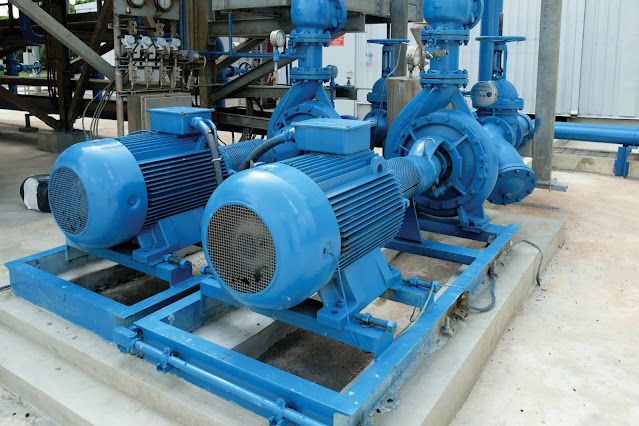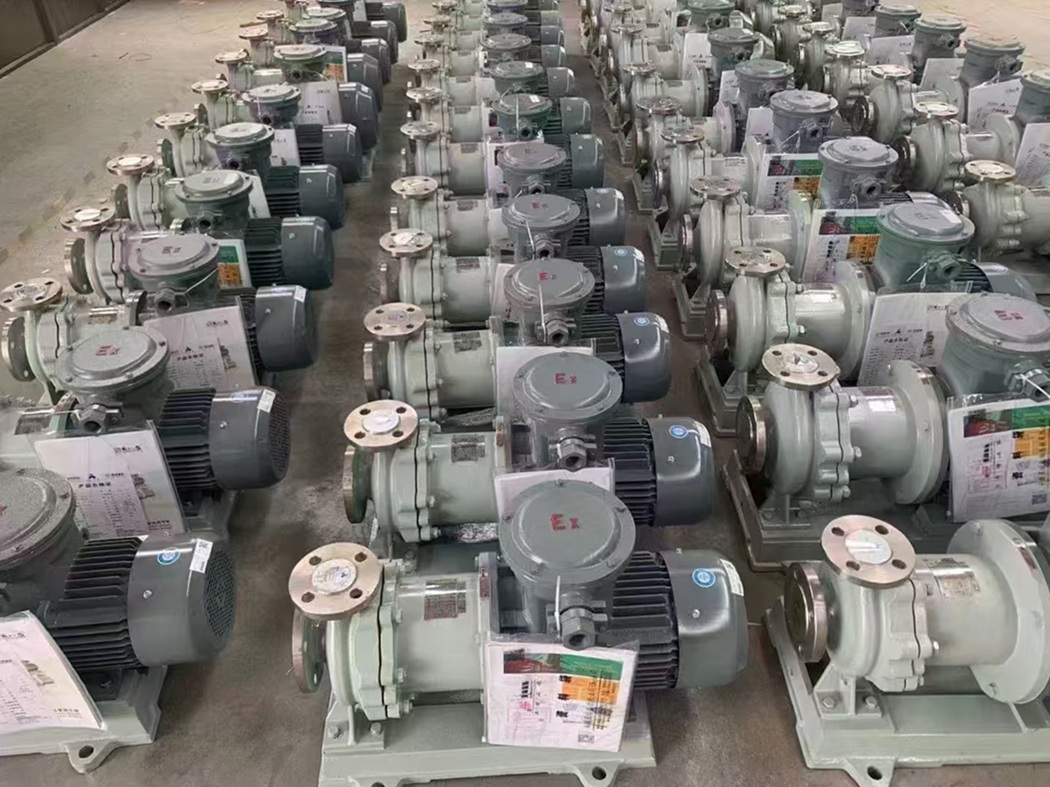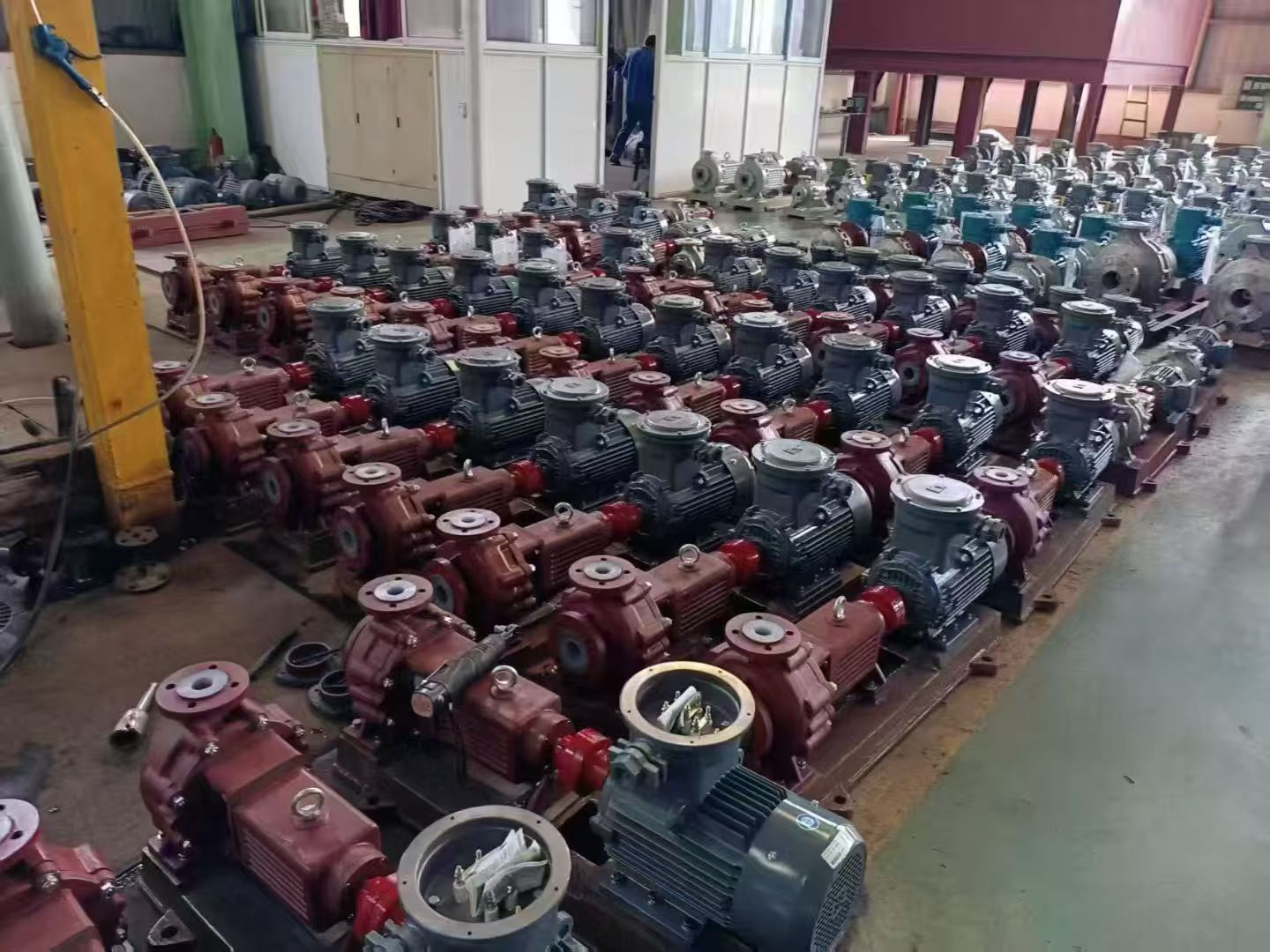Centrifugal pumps are widely used in industrial production and engineering systems for conveying various liquid media. However, during operation, a phenomenon that severely affects pump performance and service life often occurs—cavitation. Cavitation not only reduces the efficiency of centrifugal pumps but also causes serious damage to key components such as impellers, and can even lead to the complete scrapping of the equipment. Therefore, studying and understanding the causes of cavitation in centrifugal pumps is of great significance for the rational design, correct installation, and safe operation of pumps. Below, Anhui Shengshi Datang will provide you with a detailed introduction.
1. Basic Concept of Cavitation
Cavitation refers to the phenomenon where, as liquid flows through the pump impeller, the local pressure drops below the saturated vapor pressure of the liquid at its operating temperature, causing partial vaporization of the liquid and the formation of numerous tiny vapor bubbles. When these bubbles are carried by the liquid flow into a region of higher pressure, the surrounding pressure rapidly increases, causing the bubbles to collapse instantaneously and condense back into liquid. The collapse of these bubbles generates intense shock waves and localized high temperatures, which impact the impeller surface, leading to fatigue pitting or spalling of the metal. This is the cavitation phenomenon in centrifugal pumps.
The essence of cavitation is the result of the combined action of fluid dynamics and thermodynamics. The fundamental cause is the uneven pressure distribution within the liquid. When the local flow velocity is too high or the geometric design is unreasonable, the local pressure drops, triggering the cyclic process of vaporization and bubble collapse.

2. Root Cause of Cavitation
The root cause of cavitation in centrifugal pumps is that the local pressure of the liquid within the pump falls below the saturated vapor pressure of the liquid at that temperature. In a centrifugal pump, liquid flows from the suction pipe into the impeller inlet. As the flow passage gradually contracts, the liquid velocity increases, and the static pressure consequently decreases. When the local pressure drops to the saturated vapor pressure of the liquid, the liquid begins to vaporize, generating vapor bubbles. These bubbles are carried into the high-pressure region towards the middle and outlet of the impeller, where they rapidly collapse under the high pressure. The high-energy shock waves released during bubble collapse cause metal erosion on the impeller surface, increased pump vibration, enhanced noise, and problems such as reduced flow rate and head.
3. Main Factors Leading to Cavitation
a. Excessive Suction Lift: If the pump is installed too high or the suction liquid level is too low, the pressure on the suction side decreases. As the liquid flows towards the impeller inlet, the pressure drops further. When it falls below the saturated vapor pressure, vaporization occurs. If the suction lift exceeds the allowable NPSH (Net Positive Suction Head), cavitation is inevitable.
b. Excessive Suction Line Resistance: A suction pipeline that is too long, too narrow, has too many elbows, or has a partially closed valve causes significant frictional and local pressure losses. The reduced pressure at the suction end leads to a further pressure drop at the impeller inlet, making cavitation more likely. Additionally, air leakage or poor sealing in the suction piping can introduce gas into the liquid, exacerbating cavitation.
c. Excessively High Liquid Temperature: An increase in liquid temperature significantly raises its saturated vapor pressure, making the liquid more prone to vaporization. For example, the saturated vapor pressure of water is relatively low at room temperature but increases substantially at high temperatures. Even if the suction pressure remains unchanged, the vaporization condition might be met when the temperature rises, thus triggering cavitation.

d. Low Inlet Pressure or Reduced Ambient Pressure: When the pressure at the pump suction source decreases—such as due to a drop in liquid level, a vacuum in the supply container, or low ambient atmospheric pressure (e.g., at high altitudes)—the pressure at the suction port becomes insufficient, making it very easy for the liquid to vaporize at the impeller inlet.
e. Improper Pump Design or Installation: The structural design of the pump directly affects its cavitation performance. For instance, an impeller inlet diameter that is too small, an unreasonable blade leading edge angle, or a rough impeller surface can cause unstable liquid flow, leading to a sharp local pressure drop. Furthermore, failure to follow the manufacturer's provided Required NPSH (NPSHr) requirements during installation, or installing the pump at an excessive height, can also lead to cavitation.
f. Improper Operating Conditions: When the pump operates at flow rates deviating from the design point, runs for extended periods at low flow, or during sudden valve adjustments, the pressure distribution of the fluid changes, which can also cause local vaporization and cavitation.
4. Effects and Hazards of Cavitation
The hazards of cavitation to centrifugal pumps are mainly manifested in the following aspects:
a. Metal Surface Damage: The high-pressure shocks generated by collapsing bubbles cause pitting erosion on the impeller surface. Long-term development can lead to material fatigue, spalling, and even perforation of the impeller.
b. Performance Degradation: Cavitation leads to a significant reduction in flow rate, head, and efficiency, altering the pump's characteristic curves.
c. Vibration and Noise: The impact forces generated by cavitation cause mechanical vibration and high-frequency noise, affecting the stable operation of the equipment.
d. Reduced Service Life: Long-term operation under cavitation conditions accelerates mechanical wear, shortening the service life of bearings, seals, and the impeller.

5. Measures to Prevent Cavitation
To prevent or mitigate cavitation, measures should be taken from the perspectives of design, installation, and operation:
a. Select a reasonable installation height to ensure sufficient pressure on the suction side, making the Available NPSH (NPSHa) greater than the pump's Required NPSH (NPSHr).
b. Optimize the suction pipeline by shortening its length, reducing the number of elbows, increasing the pipe diameter, keeping suction valves fully open, and avoiding air ingress.
c. Control the liquid temperature through cooling or lowering the storage tank temperature to reduce the liquid's saturated vapor pressure.
d. Increase the inlet pressure, for example, by installing a booster pump, pressurizing the liquid surface, or placing the liquid container at a higher elevation.
e. Improve the impeller structure by using materials and geometries with good anti-cavitation properties, such as adding an inducer or optimizing the blade inlet angle.
f. Keep the pump operating near its design point, avoiding prolonged operation at low flow rates or other abnormal operating conditions.
In summary, the occurrence of cavitation in centrifugal pumps is primarily caused by the pressure of the liquid at the impeller inlet being too low, falling below its saturated vapor pressure, which triggers vaporization and subsequent bubble collapse. Specific factors leading to this phenomenon include excessive suction lift, excessive suction resistance, high liquid temperature, low inlet pressure, and improper design or operation. Cavitation not only affects pump performance but also causes severe damage to the equipment. Therefore, in both design and operation, emphasis must be placed on the prevention and control of cavitation. By rationally configuring the system, optimizing structural parameters, and improving operating conditions, the safe and efficient operation of centrifugal pumps can be ensured.